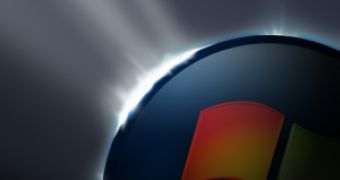Like a mother tending to its child, Microsoft only sees perfection in the handicapped Windows Vista. The Redmond company seems competently ignorant of the plethora of problems affecting the original version of the operating system released to manufacturing all the way back in November 2006. Despite the fact that faith in Vista is shaking even with Microsoft Chairman Bill Gates, which stated recently that he wished the platform would have been polished more before being released, the company is still putting its back into marketing the "great experiences Windows Vista helps [users] have." Well, at least they dropped the Wow.
With Service Pack 1 in the works and close to finish, as the Vista SP1 RC Refresh is up for grabs, Microsoft has set up to prove that Vista offers boosted performance and added security. While Vista SP1 does act as a panacea for the operating system, softening out the rough edges that survived right through the RTM stage, the Redmond company's position is that Vista is as close to perfection as it can be, just the way it is.
"It's always nice to have a few throwaway stats about Windows Vista that you can give to someone when you are combating someone who believes that XP is "good enough" for them. A new page on www.windowsvista.com that has some interesting stats on Vista that you might not know about," revealed James Senior, Microsoft UK Partner Technical Specialist.
Well, in case you did not know it, you have been living with a picture perfect Windows Vista for the past year. All the 100 million users that make up the install base of the latest Windows client have. As far as Microsoft is concerned, Vista can and in fact did, no wrong.
"The majority of Windows Vista-based PCs boot in less than a minute, which can be an improvement over Windows XP boot times. And the new Windows Vista sleep and resume features can bring your PC to life in a snap-in fact, the vast majority of all Windows Vista-based PCs resume from sleep in less than 6 seconds," Microsoft revealed in an effort to prove that Vista has cut down the periods of time users had to wait until the operating system became completely functional.
According to the Redmond company, no less than 80% of Vista users experienced boot times improvements with another 86% benefiting from sleep resume in less than 6 seconds. Personally I'm the the remaining 20% and 14%. How about you?
"Who doesn't wish their PC was just a little faster? Windows ReadyBoost is a terrific new innovation in Windows Vista that lets you speed up your system in seconds-without opening the cover or adding software," the company added. "PCs running Windows Vista that are equipped with 512 MB memory experience a performance boost of up to 40 percent."
Yes, this is indeed true if you have only 512 MB of RAM. For 1 GB of system memory the performance enhancements drop dramatically(!) to just a boost of 9%. I have 2 GB of RAM, ReadyBoost is nothing but a breeze with this amount of RAM. I didn't even notice it was enabled.
"Plugging in memory is a cool way to add speed, but it's not the only way Windows Vista is faster. Out of the box, Windows Vista performs as well, or better, than Windows XP on common home and business tasks. Windows Vista users generally experience 20 percent fewer application "hangs" than those running Windows XP. (...) Waiting less means you can do more. Only on Windows Vista," Microsoft promised.
One place where there is little argument against Microsoft's Vista facts is in the enhanced security. Vista is by no means bulletproof, but it is more secure. And this has automatically generated a boost in user confidence. In fact, throughout 2007, there has been a generous volume of criticism pointing to the latest Windows client. But very little of it was focused on security. Through the Software Development Lifecycle Microsoft has indeed pulled it off. For example, with the user Account Control plus the Internet Explorer 7 protect Mode combination, surfing is indeed more secure.
"Based on their first 180 days of availability, Windows Vista has been shown to have fewer vulnerabilities than Windows XP or MacOS X 10.4. PCs running it are 60 percent less likely to be infected with viruses, worms, and rootkits than PCs running Windows XP SP2. And Windows Vista-based PCs are over 90 percent less likely to be infected than systems running Windows XP without a Service Pack. Vista is arguably the most secure closed-source OS available on the market. Windows Vista-based PCs are almost three times less likely to be infected with potentially unwanted software than Windows XP-based PCs," Microsoft revealed.
Having "delivered" performance and security with Vista, as well as proof of both aspects, the Redmond company has chosen to conclude: "It's a fact. The more people use Windows Vista, the more they like it. So dig in and learn even more about the new features in Windows Vista. Once you've tried it, you'll see." But fear not. If you won't see it, maybe SP1 will show it to you. The wait for the service pack is near its end, after all.

 14 DAY TRIAL //
14 DAY TRIAL //